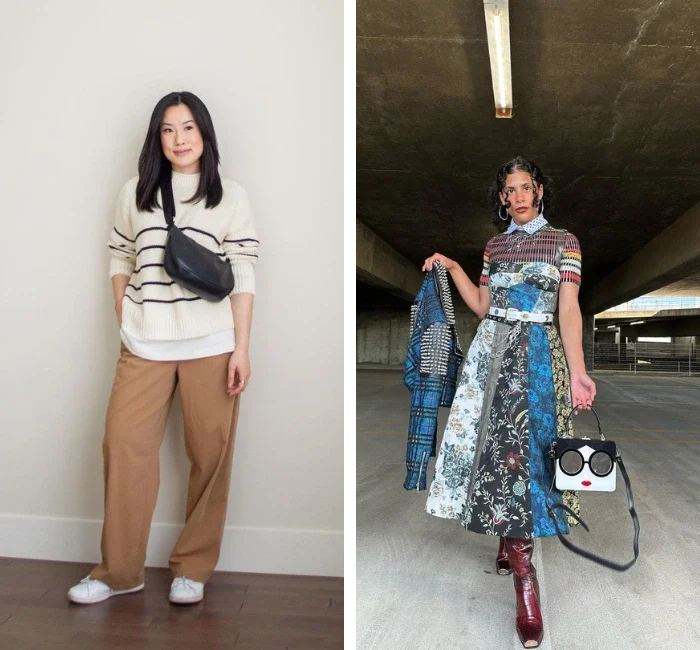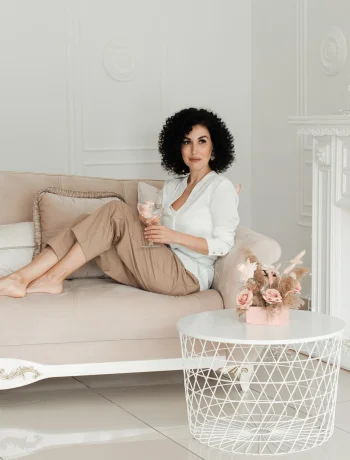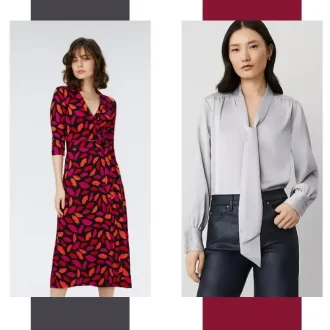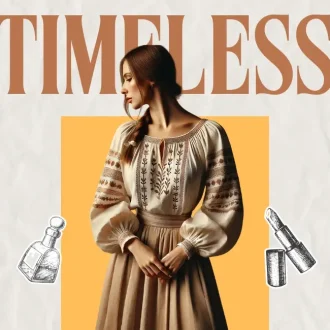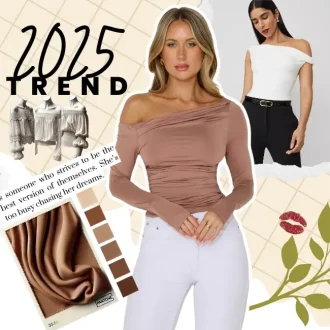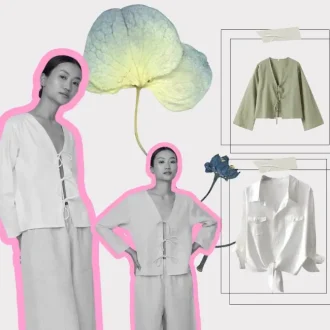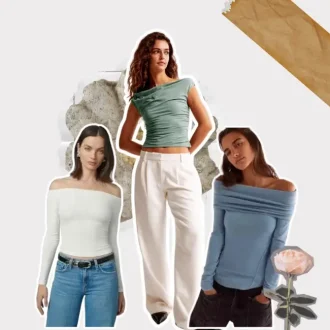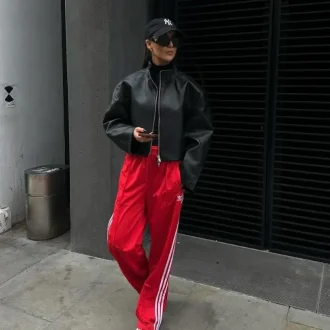- IN THIS ARTICLE
Are you a fan of sleek, simple lines, or do you gravitate towards bold, statement pieces?
Welcome to the world of Minimalist vs. Maximalist Fashion, where every thread tells a story that continues to captivate and inspire fashion enthusiasts.
This article dives deep into this stylish clash, uncovering the special traits of each style. We look at the simple beauty of minimalism and the loud statements of maximalism, exploring how these different styles form personal identities and fashion trends.
Whether it’s the quiet elegance of minimalism or the vibrant energy of maximalism, find out what resonates with your personal flair.
What is Minimalism?
Minimalism in fashion is like a breath of fresh air in a crowded room. It’s all about keeping things simple, yet striking.
Picture this: clean lines, monochromatic colors, and clothes that aren’t just about looking good, but feeling good too. It’s fashion that says a lot by showing a little.
Historical Background
Minimalism didn’t just appear out of thin air. It’s been a quiet revolution, brewing over decades. It started as a whisper in the fashion world, with designers who dared to strip everything back. They challenged the norm, showing us that fashion can be powerful even when it’s understated.
Core Principles
Quality over quantity, that’s the minimalist mantra. It’s not about having a closet bursting at the seams. It’s about having a few pieces that really mean something. Pieces that last longer, look better, and tell a story. It’s fashion that respects both the wearer and the world around us.
Psychological Appeal
Why do we love minimalism?
It’s the calm in the chaos. In a world where everything screams for attention, minimalism whispers. It’s about finding beauty in simplicity, in the clean lines and the quiet palettes. It’s fashion that’s as much about the internal as it is about the external.
Featured Brands
Think Made Trade, ABLE, and Kotn. These brands are like the quiet heroes of the minimalist world. They prove that sometimes, less really is more. Their designs? Timeless.
Their approach? Sustainable.
They’re not just making clothes. They’re crafting stories of simplicity and elegance.
What is Maximalism ?
Maximalism in fashion is like a carnival of colors and patterns, where more is always more. It’s a world where clothes are not just garments but bold statements of individuality and creativity.
Historical Influences
Maximalism is not a new kid on the block. It’s been around, making waves in the fashion ocean, for years. It’s evolved from the flamboyant styles of the past, drawing inspiration from various eras and iconic designers who dared to be different. Maximalism is a tapestry woven from the threads of fashion history, each strand a different era, a different bold designer.
Psychological Appeal
Why do we gravitate towards maximalism? It’s the thrill of the bold and the beautiful. Maximalism is for those who want to stand out, who want their clothes to be a reflection of their vibrant personalities. It’s for those who find joy in the mix of patterns, the clash of colors, and the layering of textures. Maximalism is not just fashion. It’s a celebration of uniqueness and a rebellion against the mundane.
Featured Brands
When we talk about maximalism, brands lik HYER GOODS, ILK + ERNIE, and Dedicated come to mind. They are the maestros of the maximalist symphony, orchestrating a vibrant mix of textures, colors, and patterns. Their designs are not just clothes. They’re wearable art, each piece telling a story of extravagance and boldness.
Maximalism in fashion is a loud and proud declaration of self-expression. It’s for those who believe that life is too short for boring clothes. It’s a style that doesn’t whisper; it shouts, and it shouts in technicolor.
Minimalist vs. Maximalist: Comparative Analysis

In the world of fashion, minimalism and maximalism are like two sides of the same coin, each reflecting different personal values and societal trends.
Style Approach
Minimalism, with its clean lines and muted colors, is more than just a style; it’s a statement of living intentionally. It’s for those who find beauty in simplicity and believe in the mantra of ‘less is more.’
This style resonates with individuals who value functionality, practicality, and the idea of conscious consumption. On the flip side, maximalism is a celebration of excess. It’s for the bold and the expressive, those who find joy in vibrant colors, intricate patterns, and statement pieces.
Maximalism is a style for those who believe that more is indeed more and see their clothing as an extension of their vibrant personalities.
Cultural Impact
The popularity of these styles is a mirror reflecting our society’s evolving values. Minimalism aligns with the growing awareness of sustainability and the shift towards reducing waste and living with fewer possessions. It’s a style that speaks to the environmentally conscious and those advocating for a more responsible fashion industry.
Maximalism, however, captures the spirit of liberation and diversity. It’s a reaction to the restrained nature of minimalism, offering a sartorial playground for self-expression and creativity. This style appeals to those who seek joy and playfulness in their fashion choices, challenging the norms and embracing individuality.
Sustainability
When it comes to environmental impact, both styles have their implications. Minimalism, with its focus on quality over quantity, naturally leans towards sustainable fashion. It encourages less consumption and a more thoughtful approach to wardrobe choices, potentially reducing waste and environmental impact.
However, it’s crucial to remember that even minimalist fashion has its ecological footprint, considering the resources and energy used in production. Maximalism, with its abundance of materials and designs, can contribute to increased waste and environmental strain, especially in the realm of fast fashion. Yet, a sustainable approach to maximalism is possible.
By choosing secondhand, vintage, or ethically produced maximalist pieces, fashion enthusiasts can enjoy this extravagant style in an environmentally conscious way.
Fashion Icons and Trendsetters
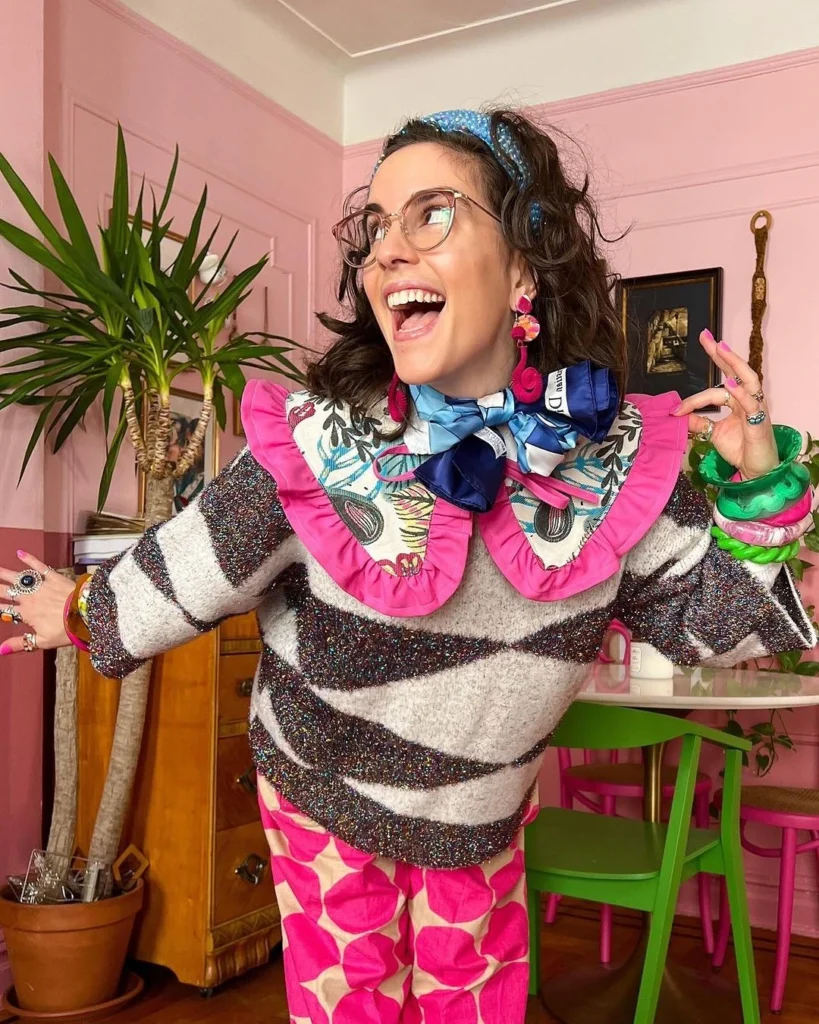
Fashion icons and trendsetters play a pivotal role in shaping our perceptions of minimalism and maximalism in fashion. Their influence extends far beyond their personal style, impacting trends, and inspiring fashion enthusiasts worldwide.
Maximalist Influencers and Icons
Sara Camposarcone, Alix Scherer, and Ami and Aya Suzuki are at the forefront of the maximalist movement. Their social media platforms, like Instagram and TikTok, are a kaleidoscope of bold colors, mixed prints, and couture-like elements. Their unique and vibrant styles have not only captured the attention of their followers but also of fashion brands eager to collaborate.
Iris Apfel stands as a towering figure in maximalist fashion. Her philosophy of “more is more and less is a bore” resonates through her eclectic and inimitable style. Iris has become a fashion icon, inspiring others to embrace maximalism and express their individuality without restraint.
Minimalist Icons
Thorstein Veblen, though not a fashion icon in the traditional sense, has significantly influenced the minimalist trend. His ideas on anti-consumerism and the consequences of excessive production and consumption have echoed through the minimalist fashion movement.
These influencers and icons, each with their distinctive style, whether it’s the understated elegance of minimalism or the bold expressiveness of maximalism, have a profound impact on fashion trends. They shape how we perceive these styles and influence our individual fashion choices. Their styles are not just about clothing; they are a reflection of personal values, societal trends, and a form of self-expression.
Practical Application
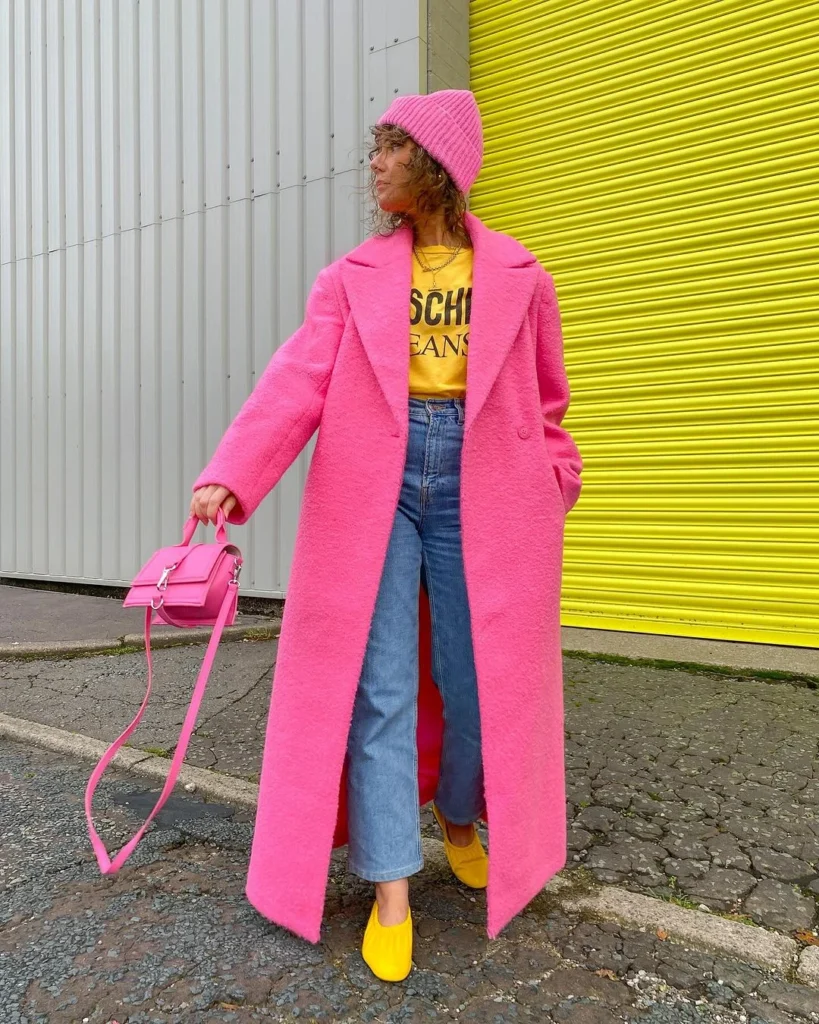
Incorporating minimalist and maximalist styles into everyday wear can be a fun and creative way to express your personal style. Here are some practical tips to help you blend these fashion approaches:
Minimalist Style Tips
Essentials First: Focus on must-have items and avoid excess. Think of a classic white tee, a tailored blazer, or well-fitted jeans.
Quality Matters: Choose high-quality pieces over a large quantity of items. A few well-made items can elevate your entire wardrobe.
Neutral Palette: Embrace neutral colors like black, white, beige, and grey. These shades are versatile and timeless.
Declutter: Keep your wardrobe fresh by regularly donating or reselling clothes you no longer wear.
Maximalist Style Tips
Color Pop: Add a splash of color to neutral outfits or go bold with a mix of vibrant hues.
Layering Fun: Layer clothes and accessories for a unique look. Think of combining a patterned scarf with a bright jacket.
Bold Patterns: Don’t shy away from striking prints and patterns. They add personality to your outfit.
Statement Jewelry: A piece of statement jewelry can transform a simple outfit into something special.
Blending Minimalist and Maximalist Styles
Balance is Key: Combine a bold piece with minimalist silhouettes. A colorful scarf with a black dress, for example.
Contrasting Layers: Mix minimalist basics with maximalist outerwear or vice versa.
Textures and Colors: Play with different textures and colors. A sleek outfit paired with a textured, colorful coat can be striking.
Thoughtful Accessories: Add maximalist accessories like bold jewelry to a minimalist outfit for a touch of flair.
Mix Prints Carefully: Incorporate a bold print into a minimalist outfit for an eclectic yet harmonious look.
Future of Fashion - Blending the Extremes
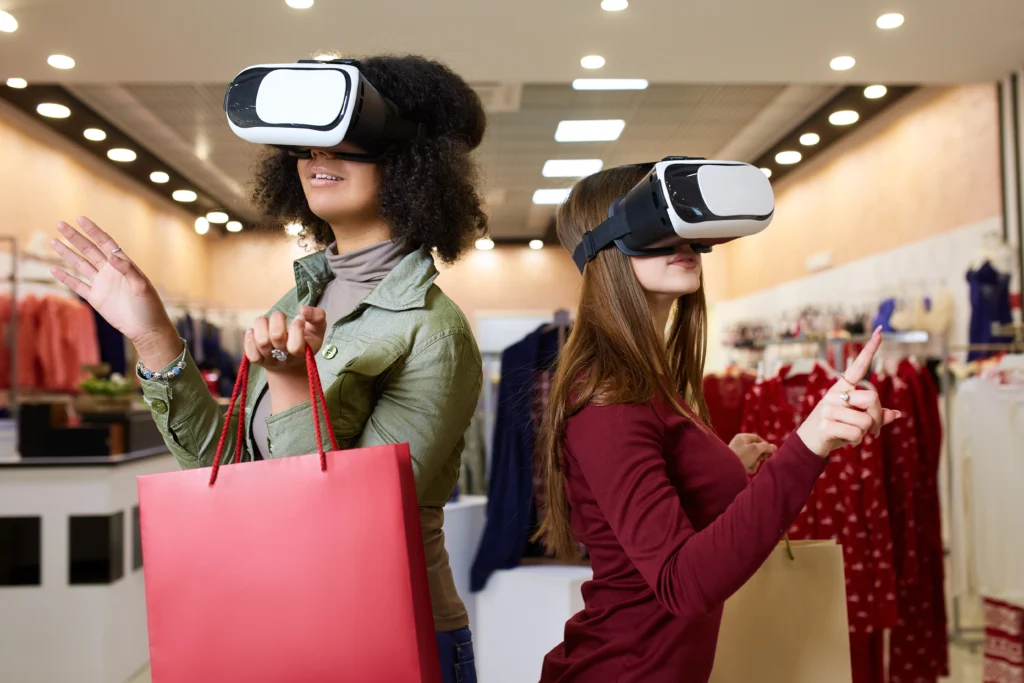
The future of fashion is shaping up to be an exciting blend of minimalist and maximalist styles, influenced significantly by technology and innovation. Here’s a glimpse into what we might expect:
1. Technology's Role
Innovative Materials: Technological advancements are introducing new, sustainable fabrics. 3D printing, for instance, is enabling intricate designs that were once impossible.
Virtual Shopping: Online shopping and virtual try-on technology are revolutionizing how we shop for clothes, making it easier and more convenient.
Fashion Design Software: Digital design tools are allowing for personalized fashion, tailored to individual preferences.
2. Convergence of Styles
Coexistence: The line between minimalism and maximalism is blurring, with both styles finding a place in the fashion world. This indicates a move away from strict style categories.
Interior Design Trends: In interior design, we’re already seeing a successful blend of minimalist and maximalist elements, hinting at a similar trend in fashion.
Inclusive Aesthetics: The fashion industry is moving towards a harmonious blend of both styles, allowing for more creative and expressive personal fashion choices.
Versatility: There’s a growing appreciation for the unique strengths of both minimalist and maximalist styles, suggesting a future where fashion enthusiasts might mix elements of both in their wardrobes.
Misconceptions and General Thoughts
Both minimalist and maximalist styles are often misunderstood. Let’s clear up some common misconceptions:
Minimalist Fashion
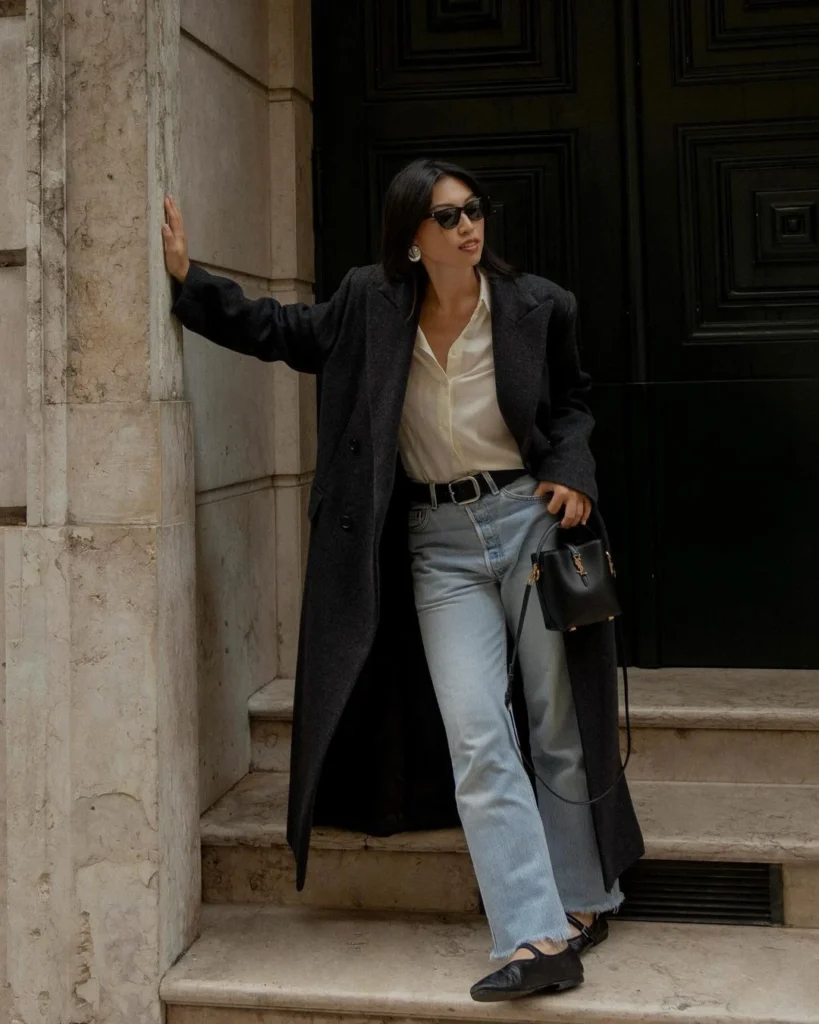
Color Misconception: It’s a myth that minimalism means no color. While minimalism does focus on simplicity and clean lines, it doesn’t exclude color. Instead, it incorporates colors in a thoughtful, restrained way.
Limitation Misconception: Some think minimalism limits personal style and self-expression, branding it as plain or boring. In reality, minimalism champions simplicity, versatility, and quality, allowing for self-expression through careful selection and styling.
Maximalist Fashion
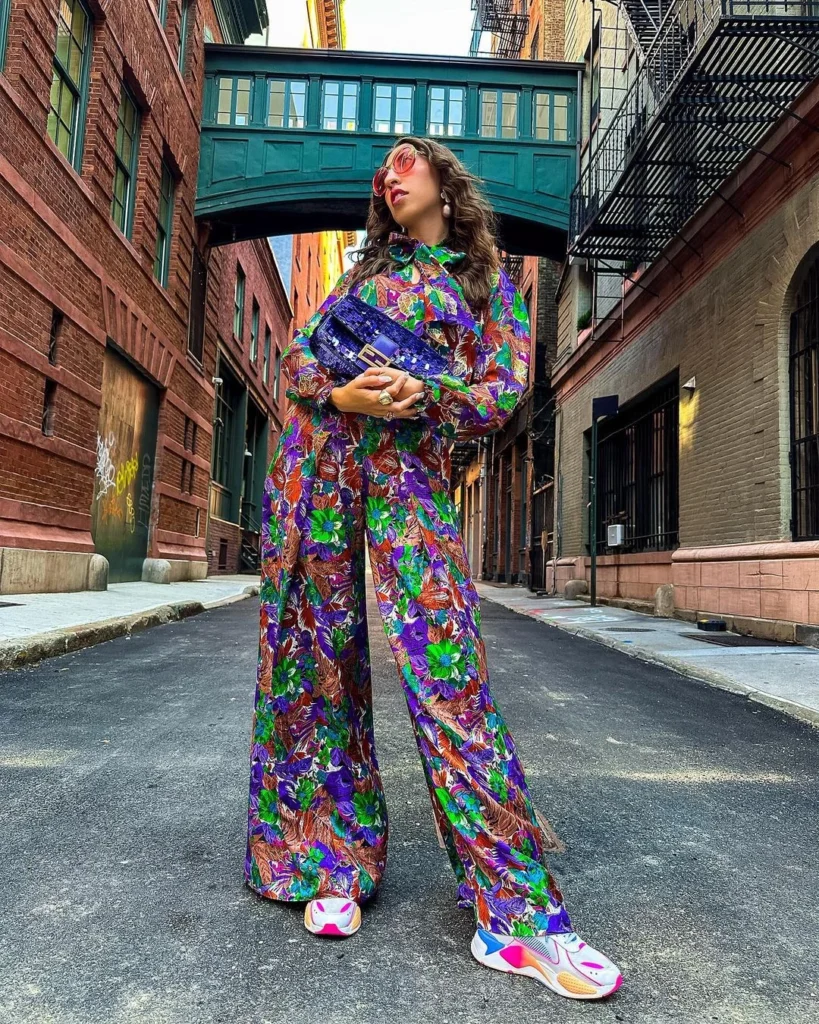
Excess Misconception: A common belief is that maximalism equals excess and waste, making it unsustainable. However, maximalism, known for its abundance and vibrancy, can be sustainable. It’s about making conscious clothing choices and supporting ethical fashion practices.
Overwhelming Misconception: Some view maximalist fashion as too overwhelming for daily wear. The truth is, maximalist fashion can be part of everyday outfits by balancing bold pieces with simple ones, experimenting with colors and textures, and playing with layers and accessories for a unique look.
Clarifying Maximalism vs. Hoarding, and Minimalism as a Lifestyle
Maximalism vs. Hoarding: Maximalism in fashion is about expressive, bold choices, not hoarding. It’s a deliberate style choice, not an accumulation of items without purpose or aesthetic consideration.
Minimalism as a Lifestyle: Minimalism isn’t just a temporary fashion solution or a form of maximalism. It’s a lifestyle choice focusing on less but better-quality items, promoting sustainability and conscious consumption.
Can You Be a Maximalist and a Minimalist?
Combining minimalist and maximalist elements in fashion is not only possible but can lead to innovative and personalized styles. Here’s how it works:
Fusing Minimalism and Maximalism
Innovative Collections: Fashion collections, like the Spring 2011 line, have shown that blending minimalism and maximalism within a single garment can create groundbreaking styles. This fusion challenges traditional fashion norms and offers a fresh perspective.
Juxtaposition: The interplay between minimalist and maximalist elements leads to diverse fashion expressions. This juxtaposition creates a unique harmony, merging the simplicity of minimalism with the boldness of maximalism.
New Equilibrium: The fashion world is witnessing a balance between minimalism and maximalism. Minimalism redefines the construction and fit of clothing, while maximalism brings together various visual elements in a cohesive way.
Reconciling Minimalist and Maximalist Philosophies
Quality and Craftsmanship: People are focusing on high-quality materials and craftsmanship. This approach emphasizes the importance of details, versatility, and the synergy of wardrobe pieces.
Understanding Proportions and Fabrics: A successful blend of these styles requires a keen understanding of proportions, colors, and fabrics, ensuring that they complement each other for a cohesive look.
Personal Expression: Embracing personal style means focusing on what you like and how you want to see yourself, rather than worrying about others’ perceptions. This confidence allows for true self-expression through fashion.
Versatility and Creativity: Appreciating versatility and creativity in personal style leads to the use of diverse color schemes, multifunctional clothing, and sophisticated accessories, reflecting a balanced maximalist approach.
Balancing Yin and Yang: Reconciling these styles involves recognizing the strengths of both and finding a balance that aligns with your personality and preferences.
Conclusion
In wrapping up, minimalist and maximalist fashion both offer unique ways to express yourself. Whether you prefer the clean elegance of minimalism or the bold flair of maximalism, mixing these styles can create a look that’s truly yours.
Remember, in fashion, it’s all about what feels right for you. Embrace your style, whether it whispers in simplicity or shouts with vibrancy!
